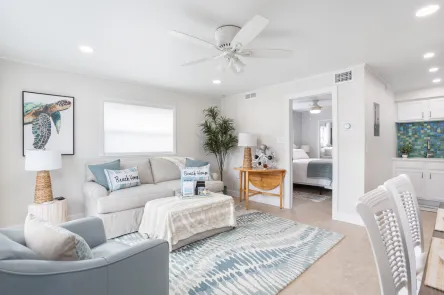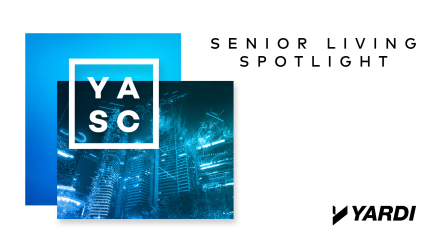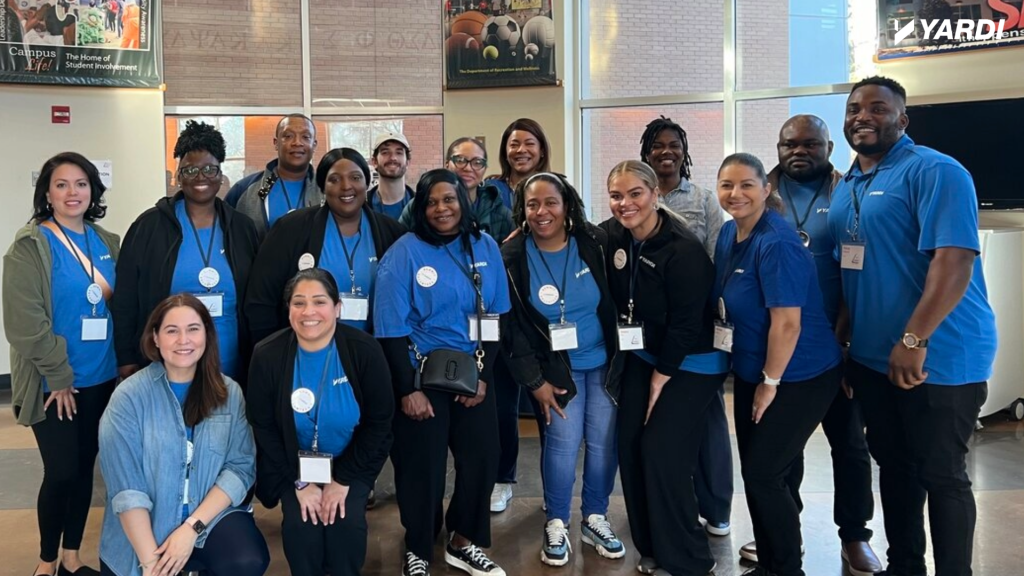Let’s explore worldwide conservation efforts to safeguard endangered species, preserve critical habitats and restore ecosystems. Wildlife conservation has many challenges. Habitat loss is experienced by many species running out of habitats due to agriculture, urbanization, deforestation and resource extraction. Habitat loss can also occur due to environmental changes such as volcanic eruptions, tsunamis, climate or sea level changes, primarily due to human activities. Successful habitat restoration requires understanding species life cycles and interactions and food, water, nutrients, space, and shelter, which are necessary to sustain species populations. When habitats cannot be restored, wildlife corridors, such as marshes or bridges are made to allow animals to cross busy highways. Poaching, sometimes called Big Game hunting, is illegal trafficking and killing of wildlife. Sometimes, these animals are sold as trophies or pets. Many magnificent animals across the world have been pushed to the brink of extinction due to poaching. The African elephants and Rhinos are critically endangered due to high demand for their horns and tusks, and the loss of these species is detrimental to the ecosystem’s health. Raising awareness and strengthening legislation and law enforcement are solutions to poaching. Having compassion and supporting nonprofit organizations or NGOs with conservation efforts brings money from afar to invest in local communities. Climate change and pollution have its fair share of wildlife conservation challenges. According to Yale University, conserving wildlife can help mitigate climate change. Animals remove vast amounts of carbon dioxide yearly, and restoring species will help limit global warming. “Wildlife species, throughout their interaction with the environment, are the missing link between biodiversity and climate,” says Oswald Schmitz, Oastler Professor of popular and community ecology at Yale University. Pollution has detrimental effects on wildlife health. As big as our planet is, it’s not big enough to...
“Eatertainment” Concepts
Reinventing Malls
With the surge in online shopping, malls have faced a significant downturn. However, the story doesn’t end there. Some malls are embracing a new era of excitement with ‘eatertainment’ concepts and more, sparking intrigue and curiosity. Goodbye, Fast-Food Restaurants. Mall food courts are packed with several places to eat, all typical pizza, Chinese or burger joints. Since the pandemic, many have closed their mall locations because drive-thru stores steal traffic. Chick-fil-A closed its original location at Greenbriar Mall in Atlanta last year after 56 years. Chick-fil-A restaurants were only located in mall food courts for the company’s first 20 years of operation. Property managers now count on emerging restaurant brands like Lazy Dog, Gen Korean BBQ and wine cafés to draw customers back into the malls. Strong restaurants and entertainment options draw steady food traffic. They can increase consumers’ time in the mall, making them valuable to property owners and other mall tenants. Places such as TopGolf or other virtual golf venues serve as “eatertainment” concepts to appeal to families and teens, and they can extend the amount of time people spend in the mall. Eataly debuted at NorthPark Center in Dallas amid the pandemic. However, its eating, shopping, and learning concepts have made it known, and the numbers are soaring. This gigantic Italian market, with fresh pasta, luxe Italian ingredients, and plenty of local goodies, also serves as a cooking school. Another cooking concept, Gen Korean BBQ, is growing mainly due to being in malls and smaller strip malls and plans to expand to at least 250 more restaurants. Customers order meat to their tables and cook it themselves, offering many Instagram opts! Gen Korean BBQ appeals to the younger generations, particularly Millennials and Gen Z, for its modern décor and vibrant Korean pop music. “There are so many burgers, chicken and pizza places. People want to experience something different,” said Gen Korean BBQ co-CEO David Kim. Aside from eating, many are gripping on experience and creating these experiential environments. Malls offer individuals a place to connect over shared interests in fun and engaging experiences to support local businesses and build relationships. In New Jersey, the Garden Social lawn and greenhouse at Westfield Garden State Plaza in Paramus hosts a variety of classes, such as yoga and candle making. Participants can also choose from themed experiences like Mommy and Me, Girls Night Out, Family Fun and Date Night. “We’re excited about the opening of Garden Social because it expands the possibilities for social engagement with a host of immersive DIY class offerings where the community can come to explore new interests and further pursue existing hobbies,” said Wesley Rebisz, senior general manager at Westfield Garden State Plaza. According to the National Retail Federation, U.S. retail sales are projected to grow 4.5% to $3.7 billion by 2027. While E-commerce will continue to expand in that period, shoppers will persist in their shift back to physical stores and eventually, sales will be about evenly split, NRF predicts. AI and retail shopping. Artificial intelligence has made an impact in today’s world. Most individuals say that the shopping experience could be better, and AI can enhance those experiences. The older generation may want AI technology for convenience, whereas the younger generation would use AI to shop and engage with brands. IBM says three in five consumers want to use AI applications as they shop. From using AI to get product information, look for deals and promotions, get service, ask questions, and resolve issues. However, these experiences must be seamless, dynamic, and contextual, from being able to shop for products from multiple brands on a marketplace with a single checkout to proving sustainability in brands. Many consumers who care about sustainability are willing to pay more for sustainable products. So, whether AI will bring malls back or “eatertainment” concepts, developers of future malls will have to understand the community and its particular...
Sustainability and Creativity
Dynamic Duo in Real Estate
Fusing sustainability and creativity is a dynamic duo in modern real estate practices. Let’s explore various aspects. Green Building Designs. Creative architects and developers incorporate sustainable practices into their designs. Many are using energy-efficient structures to reduce operational costs and utility bills using eco-friendly materials. Green building materials primarily use natural materials and renewable resources. The more unconventional the building is, the more risky insurers could find it. So, be prepared to negotiate and defend building methods and materials to show why they are durable and safe. Renewable energy integrations. Renewable energy is the best flex. Get creative with real estate projects that creatively incorporate renewable energy sources like solar panels, wind turbines or geothermal systems to reduce the carbon footprint. Renewable energy has rapidly grown over the past decade and is critical in clean energy transitions. Solar panels worldwide are reimagined in unique patterns. Google’s Bay View campus in Silicon Valley has “dragonscale” solar skins, which generate 40 percent of its office energy needs. Smart Home Tech. Integrating creative, tech-savvy solutions makes homes more energy-efficient and environmentally friendly, promoting sustainable living. If the budget allows, switch out all lighting fixtures for LED lighting and switch to energy-efficient appliances. Green Marketing. Once the switch to a greener and more sustainable building is made, use those renovations as strategies to market properties. Emphasize the unique features that will appeal to environmentally conscious renters. Few will know that stone countertops or tiles are eco-friendly and low maintenance or that adobe bricks provide natural noise protection, especially appealing to those on busy highways or interstates. Landscaping Innovations. Creative landscaping enhances the aesthetic appeal and contributes to environmental conservation. Explore various rain gardens and native plant installations. A rain garden is a garden of native plants planted in a slight depression, generally formed on a natural slope. It is designed to hold and soak rainwater runoff from roofs, driveways, patios or lawns. Rain gardens effectively remove up to 90 percent of nutrients and chemicals and up to 80 percent of sediments from rainwater runoff. Rain gardens are not ponds because they only hold water during and after rainfall, preventing mosquitoes from breeding. Native plants provide habitats for native wildlife and pollinators, making the urban landscape more wildlife-friendly and sheltering them from predators. Community Events. Creative thinking extends beyond properties to community-level projects prioritizing sustainability, fostering a sense of eco-conscious living among residents. Hold an Earth Day or Earth Week event at the property. Invite residents to a clean-up event at a local park, partner with local charities, and host a donation drive. Host a “lights out” event in the clubhouse and encourage residents to turn off electronics inside their units. Provide organic paper-made utensils and plates with organic fruits, vegetables, green juices, and teas. Get social and seek further information to raise awareness for sustainable living. Government Regulations and incentives. Creative collaborations between real estate professionals and policymakers can lead to effective regulations and incentives that promote sustainable development. Geothermal energy may be more common in the western half of the country. Still, with advocacy and developments, large portions of the country can potentially replace old heating and cooling systems in many commercial buildings. We hope these facets highlight creativity’s pivotal role in shaping a more sustainable and environmentally responsible future for the real estate...
See Success In Action
Senior Living Clients
We love speaking with our clients to learn about their journey with the Yardi Senior Living Suite. Not only does it allow for evolving our solutions based on feedback, but it also offers the chance to share our clients’ experiences — and successes — with industry professionals. That brings us to our expansive library of client testimonials which includes quick, engaging video interviews. We’ve compiled three videos to share below, featuring positive experiences from leading operators Shannex Incorporated, Watercrest Senior Living and Vitality Living. Ready to watch? See how Shannex boosts efficiency With insights coming from Director Heidi Leavitt-Hornmoen, the Shannex Incorporated video shares how with help from Yardi, the organization is saving time, increasing efficiency and optimizing resident services like never before. That’s because the Yardi Senior Living Suite allowed Shannex to eliminate manual workflows and centralize their data, streamlining operations and enabling staff to best serve their 5,000 residents. “The time efficiencies we found were significant,” notes Heidi in the video. “We were able to reduce our [accounts payable] processes by 76%. We also found a 54% reduction in accounts receivable.” Heidi also describes how since making the switch to Yardi, satisfaction among residents and families has increased. She notes how with RentCafe Senior Living Portal in particular, “the ability to send communication to every single contact that’s in our system was a big win.” Watch Heidi speak more to the power of Yardi senior living software. Explore how Watercrest enhances care services Hearing from Principal & CFO Joanie Williams, the Watercrest Senior Living video covers the importance of integration — with Joanie noting how with Yardi software, “there’s huge value because everything talks to one another, everything’s integrated.” Since swapping disparate systems with our single connected solution — designed for the unique needs of senior living — Watercrest has generated significant time savings which in turn, helps them devote more energy to resident care. “The benefit is very significant to our residents,” shares Joanie in the video. She elaborates by explaining how when you remove the need to manually input data and build reports, you equip your teams to focus on helping residents. Watch Joanie share more on the value of the Yardi Senior Living Suite. Learn how Vitality makes data-driven decisions Featuring VP of Wellness Syndell Lawhon, the Vitality Living video focuses on the value of making data-driven decisions. For Vitality, using data to inform decisions is achievable with Yardi Senior IQ, our comprehensive business intelligence (BI) solution. Since implementing a fully integrated BI solution, Vitality now captures impactful, community-specific insights at the click of a button. That includes insights regarding occupancy, falls and more. With that real-time data at their fingertips — presented in a visual format — Vitality teams can make decisions that improve resident care, staffing levels and revenue. “With Yardi Senior IQ, you can get any kind of data slice any way you want,” says Syndell in the video. By having actionable insights ready to go in one secure place, Vitality also saves time across their communities. Teams no longer need to hand-key data or sort through spreadsheets to find the necessary answers. Watch Syndell offer more detail on success with Senior IQ. Learn more and get in touch Did you enjoy hearing from operators finding success with Yardi senior living software? Check out our library of success stories and case studies! Contact team Yardi if you’d like to inquire further or get a personalized demo....
Support Residents’ Wellbeing
In Senior Living
Did you know we offer a comprehensive community wellness solution for senior living? Meet RentCafe Wellness — which enables you to support your residents’ wellbeing with online activity calendars, attendance tracking, real-time information sharing and more. What makes RentCafe Wellness a differentiator? Integrated with key elements in the Yardi Senior Living Suite, RentCafe Wellness is a single connected solution that helps you manage your community wellness initiatives. From activity scheduling to creating custom event calendars, the dynamic online platform makes it easy to support residents’ health and wellbeing. Functionality in RentCafe Wellness equips you to: Schedule activities. Maximize efficiency by scheduling and marketing wellness activities with the ability to flag registration as required or optional, create recurring activities and set registration fees. Need to make changes such as adding new activities or updating the location? Staff can make modifications directly in the platform, with updates automatically flowing into the RentCafe Senior Living Portal (when licensed) for residents and family members to see. Keep families connected. Help family members see which activities residents are attending directly in RentCafe Senior Living Portal. Information populates in the portal in real time, allowing families to monitor the wellbeing of their loved ones continuously. Want to set parameters on who can view resident data? Staff can securely control which family members may view and register for wellness activities on a resident’s behalf. Create digital calendars. Create and display customized, resident-facing calendars to announce upcoming wellness opportunities. Offer a single calendar per community or multiple calendars per community by care. Easily designate which details remain consistent and which vary month to month. For added convenience, you can publish your digital calendars for residents and families to see in RentCafe Senior Living Portal. Prefer to use paper? Quickly export calendars to Word or PDF documents to print and share across your community. Enable online payments. Allow residents and responsible parties to pay for wellness activities directly in RentCafe Wellness. When you license Yardi Payment Processing, activity charges are paid just like other community charges with a one-time monthly ACH, debit or credit card payment, or by setting up autopay. Reduce errors and save time by automating activity charge batches. Empower staff. Boost productivity among community staff by enabling the management of calendar content, design and publication, as well as activity registration and attendance tracking — all from a single platform. RentCafe Wellness simplifies staff workflows, saves time and presents an efficient method for sharing upcoming wellness opportunities. Intuitive dashboards and KPIs help staff track RSVPs and attendance, identify changes in resident behavior and forecast staffing needs. Ready to see more? If you’re looking for more information on RentCafe Wellness, check out our quick infographic. Have questions or ready to book a demo? Reach out to team...
The BRRRR Method
Build Generational Wealth
As real estate investors, putting in the work is required for the most significant ROI. Real estate investing can be a one-and-done deal or a strategy with more work but higher profits. However, using the BRRRR method, recover as much capital as possible from a project. Let’s delve into the BRRRR method and how to use it to negotiate deals, scale up your real estate portfolio and build a team for success. The BRRRR Method. Buy, rehab, rent, refinance, repeat—the acronym for the smart investor’s investment cycle and should be repeated in that order. This method works best for those who have a good understanding of the rental market in their area as well as rehab costs. Getting good at this method takes some time and has a learning curve. Still, once done correctly, the BRRRR method is a sustainable way to buy properties quickly, generate passive income and begin that generational wealth. Here’s what to know: Buy. Purchase an undervalued property. Use short-term financing that can help get the funds quickly to make renovations. Aim for a 70-75% rule as a rule of thumb. Never pay more than that percentage of the estimated after-repair value. The 30% cushion helps offset repair costs while giving sufficient equity to qualify for a refinance. Rehab. Rehabilitate the property with repairs and improvements as seen fit. Rent. Rent out the property to a qualified resident and earn rental income. Use a good insurance policy like ResidentShield to protect you and your residents from damages. Refinance. Refinance will be used to cash out on the equity appreciation. Keep in mind that it is not uncommon for lenders to have a six-month waiting period from when the property was acquired before refinancing is allowed. Repeat. Repeat and buy another...
Explore Renewable Energy...
Cleaner Greener Future
Renewable energy sources are crucial to the fight against climate change. On a long road trip across the country, many will find wind turbines, solar panels, and dams, all renewable energy technologies working to better future generations. As Earth Day approaches, let’s explore the world of renewable energy, discover the various sources available, and learn how to support the transition to renewable energy to contribute to a cleaner, greener future for our planet. Since the Industrial Revolution, most country’s worldwide energy mix has been dominated by fossil fuels, which has significant implications for the global climate and human health. However, renewable technologies, including solar, wind, hydropower, geothermal, and biomass, have rapidly grown. Approximately one-seventh of the world’s primary energy is now sourced from renewable technologies. Renewables play a critical role in clean energy transitions. Let’s learn how these sources work, their benefits, and their potential for widespread adoption. Solar: Solar energy is the most familiar renewable technology and has the most potential for cost savings. Solar energy is electrical or thermal energy harvested from the sunlight. It can reduce energy bills, increase home resale value, be low-maintenance and offer long-term savings. Net metering is a process that’s beneficial to the community because it allows consumers to sell excess electricity their solar panels produce back to the utility company, further reducing bills and reducing the community’s reliance on fossil fuels. The sun is a powerful force and one of Earth’s most reliable energy sources. As a result, solar energy is experiencing a remarkable surge in growth and will remain an influential player in energy for the foreseeable future. Wind. Humankind has always been aware of how valuable wind power can be in daily life, from sailboats to windmills. Wind energy is often considered a more...
Short-Term Rentals
Learn the Basics
Short-term rentals have become a popular secondary income source for many, whether you are renting out a room above your garage or a family cabin in the nearby National Forest. Here’s a quick guide to how to get started as a rental provider. Understanding platforms. Understand the different platforms for short-term rentals. Airbnb is the most well-known. The advantage of Airbnb is that it will get the listing in front of more views than any other platform. Airbnb does not charge for listings but will take a percentage of the commission. Vrbo, caters to more families or those traveling with pets since it allows them to list the entire home, not just spare rooms. Vrbo lets you choose to pay per booking or as an annual subscription. Booking.com will get the most exposure and is the largest travel booking website in the world, but it comes with a 15 percent fee for all reservations. Expedia is like booking.com, but costs can be lower than those of competitors. Vacasa is a full-service property management firm, meaning it handles cleaning and routine maintenance, but charges 25-35 percent of bookings. Homestay.com allows owners to rent out a room or two and charge a little less and accepts barter instead of money. Remember not to limit yourself to just one short-term rental site. Utilize a few so you can make the most money. Research trends. Keeping up with trends is vital when starting in the STR market. Read the latest news and real estate predictions at Yardi Matrix. Adjust Pricing. Consider manually reviewing and adjusting pricing to ensure it reflects the property’s unique features and current demand in the area. Finding the right balance between automation and manual intervention can lead to more competitive rates and increased revenue...
Perspectives on Closing Tech Gaps
Yardi Senior Living
We’ve reached the conclusion of our senior living blog series, where we share our perspectives on themes from Argentum’s recent technology survey. Argentum conducted the survey to assess where operators’ priorities lie when it comes to technology — and explore what innovations are needed to meet their expectations. Four key themes emerged from the report, including today’s theme, the fourth and final: urgency to close technology gaps. In short, operators are recognizing that given the evolving state of the industry, it’s time to accelerate technology innovation and adoption. We share more of the survey findings below and give a highlight of how our ever-evolving single connected solution is built to meet every need. Urgency to close technology gaps According to Argentum’s research, operators recognize that technology innovation is needed to keep up with industry shifts. From staffing challenges to navigating a new generation of residents, senior living communities are constantly navigating something new. When asked what innovation is needed in the tech space, survey respondents noted they’re seeking the following: solutions designed for the unique needs of senior living. And taking that a step further, they’re supportive of co-innovating with technology companies to create such solutions. 80% of respondents shared this sentiment. See how Yardi welcomes co-innovation At Yardi, we are committed to taking care of our clients, which involves listening to feedback and collaborating to shape the future of our solutions. And with 40 years of experience in the industry, we’ve consistently devoted our efforts to this. We know the senior living industry is constantly shifting, which means operators’ needs (especially as they relate to technology) are continuously shifting, too. Our products across the Yardi Senior Living Suite are a testament to this, as each solution — from EHR to business intelligence — is enhanced each year based on co-innovation with our clients. We stay in touch to ensure we’re understanding each client’s unique needs, challenges and goals, and our team of industry experts makes it a priority to evolve our solutions accordingly. At its core, our suite of products is designed to always meet the unique needs of senior living. Of course, our clients can speak to their experience with this co-innovation best. Explore their success stories, case studies and testimonial videos to see how they’re building success thanks to a collaborative relationship with our team. Learn more & connect with us We loved bringing you this senior living blog series! If you’re interested to learn more about the Yardi Senior Living Suite, our integrated solution designed to meet operators’ unique needs, watch an on-demand webinar. You’re always welcome to reach out to our team, too, with questions or to book a personalized demo. Thanks for...
Stamp of Approval
Postal Services Adopt Collaborative Model
How are government and private carrier services adapting as online communication and purchasing practices continue to supplant traditional paper mail? According to McKinsey, the global volume ratio of letters to parcels declined from 13:1 in 2005 to 4:1 in 2015 and is expected to reach 1:1 parity by 2025. Total U.S. parcel volume declined 2% in 2022 due to a reduced volume of traditional mail, marketing materials and periodicals. At the same time, the share of U.S. retail sales made online doubled in just a decade, creating greater demand for package delivery services. But revenue generated from shipping packages has increased recently, with carriers earning $198 billion in 2022, a 6.5% increase over the previous year. United Parcel Service led with $73 billion, followed by FedEx ($65 billion), United States Postal Service (USPS) ($31 billion) and Amazon Logistics ($24 billion). USPS was the parcel shipment leader in 2022, with 6.7 billion parcels. ‘Tremendous opportunity’ in ecommerce As mail volume continues to decline, “postal and mailing businesses are shifting from state-owned monopolies to commercial companies with diversified portfolios,” says Mordor Intelligence, a global market research firm. That means government and private carriers favor collaboration as much as competition. While USPS has a legal monopoly in the delivery of letters, it contracts air transportation to major express delivery companies as FedEx and UPS, which in turn contract some residential deliveries to USPS. “Ecommerce represents a tremendous opportunity to postal services as consumers become increasingly comfortable with ordering items online from emerging ecommerce platforms, as well as traditional brick-and-mortar making the transition to digital environments. As the volume of online sales increases, ecommerce providers are seeking cost-effective channels for the delivery and collection of purchased items,” says Mordor Intelligence. And government postal services, with their long-established national...
Building Managers Respond...
To NYC Local Law 97
Opening windows in winter to vent excess heat is a widespread practice in New York City, where residents may experience indoor temperatures over 80°F in buildings with outdated heating systems. Often, certain units are consistently overheated and others underheated, perturbing residents on both extremes. This complaint is most common in properties built before 1940, many which still rely on steam heating. New York City historic apartment building panoramic exterior view with windows and fire escapes In a city where some of the world’s oldest skyscrapers are still in use today, New York City’s inefficient buildings can cause issues beyond the discomfort of urban dwellers. Outdated heating and cooling systems, lighting, appliances and windows are energy-wasters, putting pressure on energy systems to operate at a higher cost and capacity, consuming emissions-intensive fossil fuels. Carbon inventory reports show that building energy consumption contributes more to New York City’s total emissions than any other source, including cars, trucks, buses and trains. As a result, heat and energy usage in buildings have come under scrutiny by the city, which has committed to reducing greenhouse gas (GHG) emissions by 80% by 2050. Introducing Local Law 97, New York City’s building decarbonization initiative One of the most ambitious plans for reducing emissions in the U.S., Local Law 97 (LL-97) places limits on carbon emissions associated with properties over 25,000 square feet. Passed in 2019 and coming into effect this year, LL-97 has sent ripples throughout the real estate industry. The law requires buildings in New York City to report on carbon emissions over a series of five-year compliance periods, the first of which is 2024-2029. Every five years, the allowable emissions thresholds are set to decrease. Emissions caps are set by property type, reflecting the usage trends and energy profiles...
Senior Living Spotlight...
YASC Virtual
Did you catch our senior living spotlight at this year’s virtual Yardi Advanced Solutions Conference (YASC)? Our team shared some exciting updates on what’s new in the Yardi Senior Living Suite, which we’ll recap below. As always, we thank our clients who provided thoughtful feedback to make these updates possible. See what’s new with our senior living software Our senior living spotlight began with a general update from Ray Elliott, vice president of senior living at Yardi. In addition to recapping recent enhancements in the Yardi Senior Living Suite — Ray also shared what the roadmap looks like for the coming year. Clients received information on: Voyager 8: as the next generation of our flagship community management solution, Voyager 8 includes a simplified user interface, more intuitive workflows, improved navigation and more. Ray highlighted how Voyager 8 sits on our angular platform, which allows for navigating to different Senior Living Suite products easier than ever. “With Voyager 8, all of these products sit on the same platform,” shared Ray. “It’s a much more contemporary platform — it’s faster, better and more scalable for our clients.” Additionally, Ray noted how the migration from Voyager 7S to Voyager 8 is a seamless transition for existing clients. “It’s going from one version to the other without a lot of additional work on your side,” he explained. Virtuoso: this is our brand-new artificial intelligence (AI) platform. Adaptable with Voyager 8, Virtuoso animates the entire Yardi suite of products by leveraging machine learning, generative AI, natural language and large language models. Learn about RentCafe Senior CRM IQ Next up was an overview of RentCafe Senior CRM IQ, a new product evolved from RentCafe Senior CRM. Led by Candace Seidle, senior team leader of CRM consulting, clients learned what...
Perspectives on Filling Tech Voids
Yardi Senior Living
Continuing our senior living blog series, we’re breaking down the next theme in Argentum’s recent technology survey — filling the technology void. This theme was inspired by the following: When asked what’s needed to improve resident health management, survey respondents claimed it’s better collaboration in the industry, investment in technology to support data sharing and a widespread adoption of electronic health record systems (EHRs). We take a closer look below, sharing more on Argentum’s findings — and covering how our senior living technology can lend a helping hand. Filling the technology void What’s needed to achieve comprehensive health management in the senior living industry? According to Argentum’s findings, roughly 61% of respondents claimed it’s “partnerships and collaboration between health care systems and providers.” Collaboration was closely followed by investment in new technology to support data sharing and analytics (according to 58.06% of respondents) — and widespread adoption of EHRs (51.61% of respondents). Respondents also shared that when vetting technology solutions, having resources that show demonstratable return on investment (ROI) is needed. See how our senior living technology can help As a longstanding provider of care solutions in senior living, we recognize the importance of everything operators shared in Argentum’s survey. We continuously focus on the needs of the industry when evolving our technology, including Yardi EHR — our full-service electronic health record solution. Not only is Yardi EHR a leading solution built to help operators simplify record keeping, streamline caregiver tasks and more, it’s also an interoperable platform — meaning it connects with verified interface partners to exchange comprehensive data. Everything is automatic and seamless, with data flowing to and from Yardi EHR in real time. Speaking to the Argentum survey results, our interoperable partnership with Kno2 is a key avenue for collaborating with health care systems. Kno2 is a health information platform that offers access to unlimited cloud faxing, direct secure messaging and referral networks. In essence, you can connect Yardi EHR to all outside providers, HIEs and health systems via Kno2 — enabling better visibility and resident health management. Learn more about our interoperability initiatives and partnership with Kno2. Looking at additional ways Yardi EHR supports data sharing and improving resident health outcomes, it’s important to note the platform’s integration with Senior IQ, our dynamic business intelligence solution. Thanks to the seamless connection between these two systems — which unite on a single platform — our clients have access to real-time clinical data. Clinical data is drawn directly from Yardi EHR and presented via intuitive dashboards in Senior IQ, making it easy to track clinical trends, identify residents at risk, pinpoint problems and improve protocols. Learn more about the power of clinical data in Senior IQ. Discover how our clients are building success We understand the value in hearing from industry peers when exploring technology solutions. Be sure to explore Yardi senior living client success stories, case studies and testimonial videos to see how they’re driving success and maximizing ROI. Learn more from us Enjoying this blog series? Be sure to keep up with our other posts. If we sparked your interest in our solutions and how they can fill the industry’s technology void, reach out to learn more from our...
ARPA-E Projects
Energy Tech Innovation Updates
Here’s the latest of our periodic updates on energy conservation technologies being developed under the sponsorship of Advanced Research Projects Agency-Energy (ARPA-E), the R&D arm of the U.S. Department of Energy (DOE). Grid goes underground In January, the DOE announced funding for 12 projects designed to develop cost-effective, high-speed and safe undergrounding technologies. The projects will seek to improve an electric power distribution system that includes more than 5.5 million line-miles and more than 180 million power poles. They are susceptible to damage by weather and its effects and account for a majority of power outages in the country. “DOE is supporting teams across the country as they develop innovative approaches to burying power infrastructure underground —increasing our resilience and bringing our aging grid into the 21st Century,” said Jennfer M. Granholm, Secretary of Energy. Universities, businesses and national labs receiving contracts under this initiative include Arizona State University, which will develop a water-jet underground construction tool that will eliminate the need for a hard drill bit; GE Vernova Advanced Research of Niskayuna, N.Y., which will develop a robotic worm tunneling construction tool capable of digging and installing underground conduits and cables in a single step; Pacific Northwest National Laboratory of Richland, Wash., which will employ artificial intelligence and augmented reality to identify existing utilities and other subsurface obstacles to installing underground power distribution lines; and Honolulu-based Oceanit, which will develop a look-ahead subsurface sensor system. Metals from macroalgae Funding announced in November will explore the feasibility of extracting rare earth elements (REEs), used in high performance electric motors and generators, and platinum group metals (PGMs), essential elements of decarbonization technologies, from marine macroalgae. The initiative supports a goal of securing a domestic supply chain for critical minerals and achieving U.S. net-zero goals. Teams...
Discover ENERGY STAR Solutions
Q&A with ENERGY STAR Expert Randy Moss
As environmental, social and governance (ESG) regulations evolve, so do the challenges building owners and managers face with data aggregation and reporting. Fortunately, Yardi offers Energy Solutions that provide ongoing access to reliable data, automated workflows and streamlined reporting tools — all of which help alleviate those challenges. It all starts with our Invoice Processing and ESG Reporting solution, which equips you to streamline disclosures, benchmark properties with ENERGY STAR® and GRESB, ensure data traceability and report on performance improvements. In the Q&A below, we delve further into the ENERGY STAR piece — an integral component — courtesy of Randy Moss, manager of sustainability products at Yardi. You’ll see how as an ENERGY STAR Partner of the Year for the last six years, Yardi has direct, automated access to import and export data in and out of ENERGY STAR Portfolio Manager. That means you have a holistic view of your ESG data at all times, helping you meet benchmarking and reporting needs, make informed decisions and reduce the risk of errors. To date, nearly 9,000 properties have benchmarked in ENERGY STAR Portfolio Manager with Yardi, and we’re excited to see more growth in the future. Read on to learn all-things ENERGY STAR from Randy, whose impactful work in energy management and sustainability extends over 30 years. In his role at Yardi today, Randy helps clients and internal teams identify how our products can most effectively address specific sustainability needs. What motivated you to get involved in ENERGY STAR as a Manager at Yardi? Moss: Our clients were voicing frustration with the process of loading and maintaining data in Portfolio Manager. Since managing data is one of Yardi’s strengths, it made sense to assist clients in this area. In addition to being able to automate much of the data transfer to Portfolio Manager, Yardi’s team excels at confirming data is high quality and up to date. What is ENERGY STAR Portfolio Manager used for? Moss: Portfolio Manager is now the most used system for Compliance and Green Finance reporting in North America. Literally hundreds of jurisdictions and programs use Portfolio Manager as their system of record for compliance reporting. Loading data into Portfolio Manager permits properties to share the same data with multiple programs. One property we manage today is sending Portfolio Manager data to five different programs. All receive reports based on the same data, eliminating the chance of discrepancies between data being sent to different programs. The coming wave of Building Performance Standards (BPS) are usually referencing data in Portfolio Manager. This makes the accuracy of data in Portfolio Manager critically important. What does it mean that Yardi is an ENERGY STAR Partner? Moss: Yardi has been Partner of the Year for six years in in row and has received the Sustained Excellence Award, which is the highest level of EPA recognition, for three years now. This recognition is reserved for best in class service providers and Yardi is honored to be recognized as a Partner of the Year with Sustained Excellence. This motivates us to continuously seek ways to improve our services so we can provide our clients with the best service available for their ENERGY STAR data. How does Yardi help clients comply with local and state regulations? Moss: New regulations are emerging almost weekly. Every jurisdiction — and there’s about 100 of them we report to — has different reporting requirements and timelines. For building owners and managers, the process of collecting data and reporting annually is painful. With Yardi Energy Solutions, we have a team of analysts who are highly skilled at working with environmental data and utility vendors. We handle capturing the data and putting it into ENERGY STAR, ensuring accurate and on-time reporting to keep your properties in full compliance with the relevant regulations. The Yardi team also tracks emerging regulations and trends in the industry. Building Performance Standards, built on ENERGY...
Perspectives on Driving Tech Adoption
Yardi Senior Living
We’re back for part two of our senior living blog series, where we share our perspectives on themes from Argentum’s recent technology survey. So far, we’ve covered the survey results and our take on silo-busting (replacing disparate systems with integrated, interoperable software). Today’s post is all about the next theme: Capital to drive technology adoption. In short, operators currently see limited capital as a barrier to adopting integrated technology — but their appetite for adoption is strong. And when asked what’s most important when vetting new solutions, their answer was simple: proven return on investment (ROI). Read on as we delve deeper into the survey results — and share how the Yardi Senior Living Suite offers maximum ROI. Capital to drive technology adoption: The importance of ROI For today’s operators, financial constraints act as barriers to adoption, deployment and effective utilization of integrated technology solutions. This was agreed upon by more than 50% of survey respondents, according to Argentum. That said, operators are confident that moving forward with integrated technology is crucial. They require proven ROI, though, when evaluating potential solutions. Nearly two-thirds of survey respondents deemed ROI as critical when vetting new software. Respondents also shared their priority “shopping list” in the search for integrated technology. This included integrating outcome data and health records, as well as building out a comprehensive data infrastructure for analytics. See how the Yardi Senior Living Suite optimizes ROI Plain and simple, by uniting every solution you need on a single integrated platform, the Yardi Senior Living Suite maximizes your ROI. You eliminate the need to license disparate software systems — which lowers your total cost of ownership and offers added benefits like time savings, prevention of data-entry errors, streamlined workflows and more. As it relates to the Argentum survey, here’s a glimpse of key integrations within the Yardi Senior Living Suite — all of which offer unmatched ROI: Yardi Voyager Senior Housing and RentCafe Senior CRM: access readily updated unit availability, create electronic leases with ease and utilize a comprehensive leasing workflow. Yardi Voyager Senior Housing and Yardi EHR: capture all care cost data — and view changes in care instantly — in one secure place. RentCafe Senior CRM and Yardi EHR: enjoy a database that centralizes the entire resident story through their prospect-to-resident journey, equipping caregivers to streamline assessments. Yardi EHR, eMAR and pharmacies: optimize orders by facilitating seamless communication between caregivers and pharmacy partners. Yardi Senior IQ and all of the above: unlock a business intelligence solution that automatically collects data from tools across the Senior Living Suite, including outcome data related to CRM and EHR, as well as financial analytics. Hear from Yardi clients, connect with our team We know proven ROI is what operators need most, so we invite you to reach out to our senior living team. We’ll give you a personalized, in-depth demo of our solutions to show exactly how they maximize your ROI. In the meantime, our fantastic clients can speak to their experience with our solutions. Explore Yardi senior living client success stories, case studies and testimonial videos to see how they’re building success and boosting ROI. Keep up with the series Be sure to read the other posts in this series. If you’d like to read the full Argentum survey, download it...
Side Hustles
In Real Estate
Real estate has long been a popular side hustle – in other words, a job that is performed in addition to other work or responsibilities. Choosing a real estate side hustle can be challenging since some roles require a heavy financial commitment to get started, like investing in rentals or flipping properties. Let’s explore a few of the lower-risk options. Airbnb Hosting. Airbnb hosting has been a popular side hustle for many property owners. The Airbnb host makes, on average, $924 a month, depending on the location and frequency of rental traffic. Airbnb hosting will require investing in the property, keeping it clean and minimal with appropriate decorations and furniture, and adequately stocking the property for guests. Property Data Collector. Not to be confused with a property appraiser, property data collectors record facts, not opinions or judgments. Property data collectors then use the information gathered to draft a property data report, which they submit to the appraisal management company. According to ZipRecruiter, the national average pay is $20/hour. Staging Business: Taking photos of properties and staging the property to be prepared to hit the market. Requires some interior design knowledge. The goal is to help buyers visualize themselves there and aid sales appeal. Real Estate Wholesaling: Real estate wholesaling is a strategy in which a wholesaler obtains a contract on a property with its seller and, in turn, sells the contract to an investor. Wholesalers start by looking for discounted property to put under contract. This is a good option for those looking to become an investor but do not have enough capital. One attractive aspect is that wholesaling does not require special licensing or certifications in most states. For example, some real estate wholesalers in Georgia can earn close to $72,000 annually with...
OneGoal Student Summit
Atlanta Volunteers
OneGoal Metro Atlanta works with regional partner schools to develop their knowledge and capacity, resulting in more equitable and practical support for all students. Over the years, OneGoal has delivered real student impact. 2024 Atlanta Student Summit Conference Hosted at Clayton State University, OneGoal brought 850 high school juniors and seniors from ten schools around the Atlanta metro area for a college and career exploration day. The event was full of energy and excitement as students began to envision what a path to higher education could look like for them—the day included planning for the future, using tools to define the path to higher education and personal connections with the OneGoal community. It allows students to explore various career paths, and postsecondary options and engage with colleges and technical schools at an Opportunity Fair. #TeamYardi of the Atlanta Relief Team contributed significantly to this event by assisting with setup/organization, welcoming committees, lunch support, cleanup, and even featuring entrepreneurs who shared their experiences and lessons learned. “We successfully fulfilled every request made to us, contributing to the nonprofit cause and investing in the future workforce and our communities,” exclaimed Amy Mojica, relief suite team Atlanta case supervisor. The entrepreneurs who shared their experiences: Scott Mclean, Senior Manager for Yardi Relief Suite Robyn Woods Green Jacket, Yardi consultant Ternisa Kirk, Black Jacket, Case Auditor Janice Wells, pink Jacket, Case Auditor The Yardi Relief Team is a Yardi group that assists states, counties, and cities in managing federal and state funds to help communities in need. This assistance encompasses mortgage, rental, and utility aid as well as other forms of support to facilitate Treasury, Department of Energy, and other community service block grants. Yardi looks forward to more events with OneGoal and future community events! Find future nonprofit profiles...
Perspectives on Silo-Busting
Yardi Senior Living
According to a recent Argentum survey, today’s senior living organizations recognize the need for integrated, interoperable software. Argentum — a leading association serving companies that own, operate and support senior living communities — conducted the survey to assess where operators’ priorities lie when it comes to technology. Four key themes (including the importance of “silo-busting” and the need for integrated technology) emerged from the report. We’re all about keeping the pulse on the senior living landscape, so we’re releasing a blog series that delves into each theme. And as a leading provider of senior living management software, we’re sharing our perspectives along the way. Read on for our perspectives on the first theme — silo-busting — and stay tuned for the posts to come. Silo-busting: The power of integration and interoperability As Argentum puts it, cohesive and integrated technology solutions are needed more than ever in the senior living industry. Among survey respondents, there was near unanimous consent on this — with majority calling attention to the need for silo-busting. Respondents also shared the barriers they see in getting there, citing the industry’s struggle with software incompatibility, lack of interoperability and resistance to change. Argentum notes how the call for silo-busting goes beyond reaching smoother operations in senior living communities. At its core, it’s a “strategic imperative for achieving comprehensive resident health management, which is critical for future participation in value-based care.” The survey respondents shed light on this, with only 23.5% stating they have a comprehensive view of resident health outcomes with their current technology. Meet our fully integrated solution We agree that senior living software needs the power of integration and interoperability. Both are needed to effectively centralize resident health data, promote accuracy, enhance care services and more. We prioritize both in the Yardi Senior Living Suite, our single connected solution that unites every tool you need in one place. Uniquely designed to meet the needs of senior living operators, the suite of integrated tools is hosted on a HIPAA and SOX-compliant platform. That includes financials, care, pharmacy, marketing, business intelligence and more. With Yardi, you say goodbye to the challenges associated with siloed solutions — and reap the benefits of working with the industry’s most trusted cloud provider. More specifically, when you partake in silo-busting and implement a fully integrated solution like ours, you’re equipped to save time, reduce costs, prevent errors, streamline operations and most importantly, improve resident care outcomes. Learn more about the value of integrated tools in the Yardi Senior Living Suite. Explore our interoperable platform We’ve covered that our solutions unite on a single platform, but what about seamless data exchange between information systems? On the care side we have Yardi EHR, our interoperable electronic health record solution, which channels interoperability through a range of verified interface partners. That means comprehensive data automatically flows to and from Yardi EHR in real time. Our partnership with Kno2 — a leading health information platform — allows you to seamlessly connect Yardi EHR to all outside providers, HIEs and health systems. And depending on your license, additional features may include Kno2-to-Kno2 messaging, online identity verification, Kno2 and national provider directories, message handling, unstructured document quality control tools and more. The connection between Yardi EHR and Kno2 ultimately aligns with value-based care initiatives — and offers you better visibility into residents’ overall health management. Additional health interfaces supported by Yardi EHR include a nurse call system, dietary management platform, infection control solution and more. Learn more about the power of interoperability in Yardi EHR. Get in touch with us We encourage you to read more of Argentum’s report and check out the next post in our series. Agree on the importance of silo-busting and ready to explore our single connected solution? Reach out to our senior living...
What’s New in Construction?
3-Year Update
An article published here almost three years ago explored the state of housing construction, which were reaching the highest prices in 15 years because of rising demand driven by low mortgage interest rates and the spiriling cost of materials such as steel and copper wire. By May 2021, lumber price spikes alone added nearly $12,000 to the market value of a newly built multifamily home. A Wells Fargo economist noted, “New residential construction remains strong but building material pricing and availability are likely to remain significant headwinds.” Crane and building construction site against blue sky Today, construction has slowed “due to supply chain bottlenecks, rising costs and high-interest rates,” says Construction Dive, a news source for construction and building industry trends. The federal funds interest rate recorded a 22-year high in September 2023, potentially making financing more expensive going forward as interest rates fluctuate and impact the feasibility of some projects. Materials, supply chain impacts While prices for some materials such as lumber and softwood lumber declined in 2023, other materials have seen sharp increases. Concrete products, for example, were 14.8% higher in 2023 than in 2022. Construction equipment and machinery also saw double-digit price growth from 2022-23. Furthermore, the supply chain is still recovering from the massive bottleneck caused by COVID-19. Federal law requiring federally funded construction projects to employ U.S.-created materials poses a formidable challenge to manufacturing capacity. “Supply chain challenges mean that even the most diligent contractors are likely to get hit with parts shortages and delays,” says Construction Dive. Worker shortage persists Another persistent problem is the shortage of skilled construction workers. “Demand for construction workers is at an all-time high but the number of skilled workers is lower than ever,” Construction Dive says, with 91% of contractors having trouble filling positions in 2023 and the industry needing about 546,000 additional workers — including engineers, superintendents, project managers, safety and quality managers and architects — to meet production demands this year. Property insurance leader The Hartford projects that more than 40% of the current U.S. construction workforce will retire in the next decade. Meanwhile, job openings remain at a historic high level. “The expectation is that construction worker shortfalls will remain elevated,” says Anirban Basu, chief economist for Associated Builders and Contractors (ABC), a national construction industry trade association. Pipeline strength boosts industry These factors contribute to an environment in which “contractors are looking for ways to cut costs, protect their assets and stay ahead of potential losses,” says Construction Dive. But many insiders believe the economy is still strong enough to keep the industry out of serious trouble. In fact, a JLL forecast of U.S. and Canada construction trends for 2024 forecast notes that a strong project pipeline will keep the industry busy through the year, despite higher interest rates and slower private starts. JLL projects construction cost growth of 2% to 4% this year, with shorter lead times and more stable prices for most materials. “We believe some of the pressures are easing from the COVID-19 pandemic and related issues, like product delays, have slowly alleviated. Yet there are still some bottlenecks with things like electrical equipment, so it is still critical to plan well in advance,” says Chris O’Hala, managing director of construction risk engineering for The Hartford. With the industry in flux, it will be important for leaders to “address any potential risk factors. A lot of leaders have been increasing their planning efforts and looking into technology solutions to combat the ongoing labor shortage,” says David DeSilva, head of construction at The Hartford. Further boosts to construction could come from legislation passed in 2021 and 2022: the Infrastructure Investment and Jobs Act, the Inflation Reduction Act and the Creating Helpful Incentives to Produce Semiconductors (CHIPS) Act. Tips from Construction Dive and other insiders that can help construction firms remain stable include: Developing a contingency plan for material shortages or delays...




















